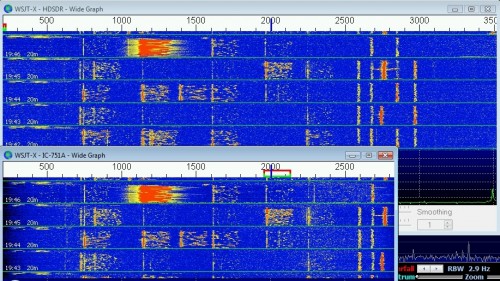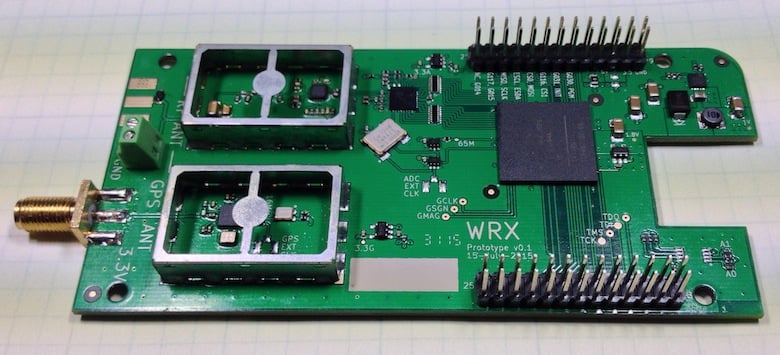Using the RTL-SDR as a Panadapter for the IC-751A
A panadapter is a device that connects to a standard hardware radio and allows you to visually see the RF signals on a waterfall. Since SDR’s run on the PC, they naturally have the ability to display a panadapter screen, and most software like SDR#, HDSDR and SDR-Console already provide this. The RTL-SDR can also be used to add panadapter capabilities to a regular hardware radio.
Gary Rondeau has been using the RTL-SDR as a panadapter for his IC-751A, which is a high quality ham radio transceiver. In his first post, Gary shows how he connected the RTL-SDR in a block diagram, and then shows how he interfaces the RTL-SDR and IC-751A together using HDSDR and the Omnirig software.

In his second post he shows a comparison between decoding JT65 and JT9 signals directly from the IC-751A audio output, vs via the RTL-SDR & HDSDR panadapter connection. His results show that as long as there is sufficient signal level, the RTL-SDR as a panadapter can match the performance of the raw IC-751A audio output, even producing less signal splatter on strong signals due to the pure numerical vs analogue mixing strategies of SDRs vs analogue radios.

Finally, in his third post he shows some more benefits of using the RTL-SDR as a panadapter, including rapid SSB tuning, RFI identification and signatures, helping work a pile up, monitor SSB net while working PSK on the parent radio, monitor the JT65 & JT9 band while working PSK – or vise versa and finally leave the radios on and monitor PSK, RTTY, JT65 & JT9 traffic for PSK Reporter.


